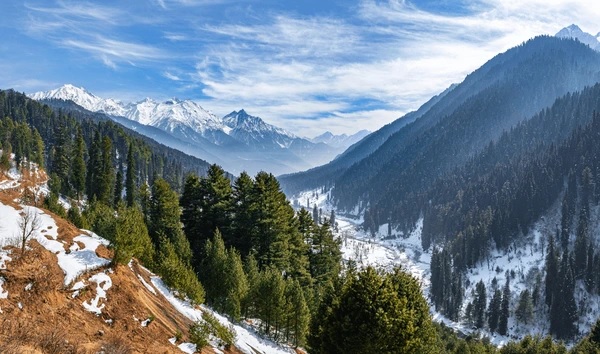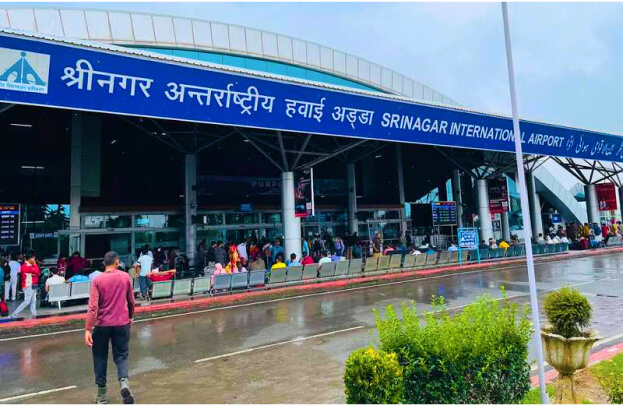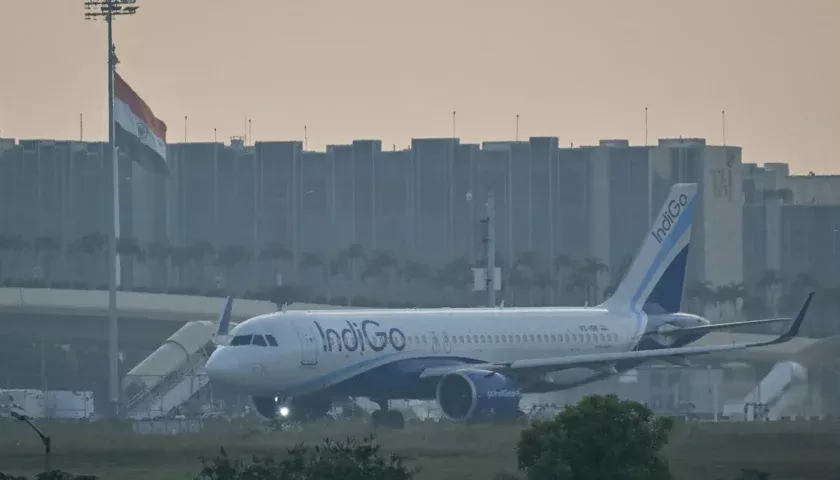Adventure Tourism: Key to Kashmir’s Comeback
By: Javid Amin | Srinagar | 14 July 2025
A Valley Poised for Revival
Kashmir has long been India’s crown jewel, a destination whose beauty has captured the imagination of travelers, poets, and filmmakers alike. But its tourism industry has seen sharp ebbs and flows due to political instability, security advisories, and shifting traveler interests. In a bold new vision, former Chief Minister Omar Abdullah has called for a shift in how the region redefines its appeal—by embracing adventure tourism in Kashmir as the centerpiece of its revival.
Speaking at the launch of Valleys of Jammu and Kashmir – A Tribute to the Soul of Jammu and Kashmir, a book by Mehmood A. Shah, Omar Abdullah emphasized the importance of fresh, immersive travel experiences that go beyond sightseeing. “Tourists won’t return just for our Mughal gardens or gondola rides. They return when offered something new—something refreshing each time. Adventure tourism provides exactly that,” he noted.
This article explores Abdullah’s strategy in detail, analyzing the potential of adventure tourism in Kashmir, the cultural and ecological opportunities it unlocks, and the strategic roadmap for execution. More than just a tourism plan, it’s a blueprint for reintroducing the world to the heart of Kashmir—through its untamed trails, timeless stories, and transformative journeys.
Reimagining Kashmir: Why Adventure Tourism?
Beyond the Brochure: The Shift in Traveler Expectations
Today’s travelers aren’t satisfied with passive sightseeing. The modern tourist seeks purpose, thrill, and connection. Whether it’s a solo trek to a remote Himalayan lake, biking through pine-scented valleys, or camping in traditional Gujjar settlements, adventure tourism in Kashmir taps into this evolving mindset.
According to a report by the Adventure Travel Trade Association (ATTA), 69% of travelers prioritize authentic experiences and physical activities when choosing destinations. Kashmir, with its unexplored trails, pristine rivers, and snow-covered ridges, is naturally positioned to cater to this demand. Yet, this potential remains largely untapped.
Omar Abdullah’s Vision: Revival Through Rediscovery
Abdullah’s proposal underscores a deeper philosophical pivot: tourism should not merely be a commercial endeavor, but a cultural and ecological reconnection.
“This isn’t just tourism,” he declared. “It’s a call to reconnect with Kashmir’s soul through its mountains, stories, and paths less traveled.”
It’s about letting people hike through oral history, taste tradition in a tea shared with shepherds, and stand where caravans once crossed. Adventure tourism becomes a bridge—between past and future, nature and community, traveler and local.
What’s Being Proposed? A Multi-Dimensional Strategy
1. Revival of Historic Trekking Routes
Historically, Kashmir was a crucial junction in trade and pilgrimage routes that connected India with Central Asia and Tibet. Many of these trails, now overgrown or restricted, once hosted traders, Sufi mystics, and nomadic tribes.
Abdullah proposes reviving these ancient corridors, linking Jammu, Kashmir, and Ladakh through a network of restored trekking paths. These routes are not just geographical lines but cultural arteries. They include:
- Zanskar-Kishtwar trail: Cutting through canyons and monasteries
- Sinthan Pass to Pahalgam: Connecting ancient shepherd villages
- Mughal Road hikes: Following the path of emperors and caravans
Restoring these routes would require clearing trails, setting up sustainable shelters, and involving local communities as guides, storytellers, and hosts.
2. Digitization of Trails
Technology is a key enabler in Abdullah’s plan. He envisions interactive apps and digital platforms where tourists can:
- Download trail maps with GPS coordinates
- Learn the history, flora, and folklore of each waypoint
- Log their own journeys with photos, notes, and route updates
This digital dimension not only enhances safety and accessibility but creates a living archive of Kashmir’s trails. It bridges the gap between ancient paths and modern travelers.
3. Cultural and Ecological Preservation with Ladakh
Joint efforts with Ladakh are proposed to preserve fragile cultural corridors and biodiversity hotspots. The partnership would involve:
- Cross-border eco-certification for tourism operators
- Inter-regional festivals celebrating Himalayan heritage
- Flora and fauna conservation drives along trekking paths
This initiative seeks to shift the tourism narrative from consumption to conservation, ensuring that growth is in harmony with sustainability.
4. Expanding the Market: Beyond Travel Advisories
Currently, Kashmir’s international tourism is constrained by advisories issued by several Western nations. Abdullah suggests a pragmatic pivot—targeting travelers from:
- Southeast Asia: Malaysia, Singapore, Thailand
- Middle East: UAE, Oman, Saudi Arabia
- Central Asia: Kazakhstan, Uzbekistan
These markets have rising interest in halal travel, spiritual journeys, and nature-based experiences—niches where Kashmir excels.
Collaborations with tour operators, digital influencers, and diaspora communities could spark renewed interest and bookings from these regions.
Also Read | JKL Travels Mega Offers 2025: Honeymoon, Family, Pilgrim, and Luxury Trips to Kashmir at Budget Prices!
The Broader Impact: Why This Strategy Matters
Economic Revival Through Job Creation
Adventure tourism isn’t just about trekking; it involves logistics, transport, gear rentals, digital tools, guiding services, and hospitality. Implementing Abdullah’s strategy could:
- Create thousands of jobs in remote areas
- Encourage micro-entrepreneurship among youth and women
- Revive traditional crafts (like pattu weaving, wicker baskets, etc.) through tourism demand
Community Involvement and Youth Empowerment
A core strength of adventure tourism lies in community engagement. By training local youth as guides, naturalists, or digital content creators, Kashmir can retain its young population while turning them into custodians of their heritage.
Local women can manage homestays, run cafes on trails, or lead wellness retreats focused on Kashmiri traditions.
Rebranding Kashmir: From Conflict to Curiosity
International media often frames Kashmir through the lens of conflict. Abdullah’s strategy repositions it as a land of discovery, resilience, and warmth.
Imagine the headlines: “Solo Trekker Finds Healing in Himalayan Hamlet”, or *”From Saffron Farms to Snow Trails: A Kashmir Adventure”—*these narratives attract a new breed of traveler.
Challenges to Address
While the vision is bold, practical concerns must be addressed:
- Security & Accessibility: Ensuring tourist safety, particularly along border zones
- Environmental Impact: Preventing over-tourism in ecologically sensitive areas
- Policy Support: Streamlining permits, subsidies, and inter-state coordination
Transparent governance, data-driven planning, and local leadership will be critical in translating vision to reality.
A Campaign for the World: Ideas for Implementation
1. #RediscoverKashmir Digital Campaign
Run an Instagram-led campaign featuring:
- Weekly trail highlights
- Short reels of trekker stories
- AR/VR experiences of ancient routes
2. Eco-Certified Trail Operator Network
Develop a registry of eco-certified tour operators and guides trained in:
- Leave No Trace principles
- Cultural sensitivity
- Emergency response
3. Adventure Tourism Passport
Create a travel journal-style passport where tourists collect digital stamps from each trail. Incentives like discounts, gifts, or certificates build engagement.
4. Annual Himalayan Heritage Trek Festival
Host an annual trekking festival with:
- Multiple trails
- Cultural showcases (music, food, crafts)
- International influencers
This would blend adventure with soft power diplomacy, attracting press and partnerships.
Also Read | JKL Travels Presents: The Call of the Mountains – Discover Kashmir & Ladakh Like Never Before!
Bottom-Line: The Soul of Kashmir Lies in Its Trails
As Omar Abdullah poignantly noted, the future of tourism in Kashmir depends not just on pretty postcards, but on powerful experiences. Adventure tourism in Kashmir offers an answer that is sustainable, inclusive, and soul-stirring.
It’s a way to preserve the past, empower the present, and inspire the future—one trail at a time.
Now is the time for policymakers, entrepreneurs, travelers, and storytellers to come together and walk these forgotten paths. Because when you walk through Kashmir’s mountains, you don’t just see beauty—you feel history, hope, and homecoming.




